Remaking Division 28: Specifying electronic safety and security with Masterformat 2016
by Katie Daniel | May 5, 2016 10:52 am

by Ray Coulombe, CSI, CDT
Most of the electronic and intelligent elements of safety and security-related tasks are aggregated in MasterFormat’s Division 28–Electronic Safety and Security. Over time, with the advances in technology and the evolution of the security industry, numerous related elements have developed that now reside outside this division. As a result, those seeking to write project specifications involving electronic physical security are often confronted with the dilemma of how to bring together many different products to provide a unified workable solution.
Many in the security and fire industries have thrown up their hands in frustration and either ignored the MasterFormat guidelines or created their own numbers to organize project specifications. To be fair, outside of the door hardware supplier community, these industries have not done a good job of effectively engaging with CSI in general and, more specifically, keeping MasterFormat Division 28 relevant.
Many in the security industry realized this was an unacceptable state of affairs and decided to do something about it. This article is about the journey to rebuild and reset Division 28 for the new MasterFormat 2016, and it covers both the process behind the effort as well as the explanation of the final approved results.
History of Division 28
Division 28 is intended to encompass the various electronic (i.e. ‘intelligent’) elements related to security, fire, and other life safety systems. The last major change in Division 28 occurred in 2004 with significant input from Building Industry Consulting Service International (BICSI). In addition to Common Work Results, its primary categories are:
- 28 10 00−Electronic Access Control and Intrusion;
- 28 20 00−Electronic Surveillance;
- 28 30 00−Electronic Monitoring and Control; and
- 28 40 00−Electronic Detection and Alarm.
There are problems with each of these categories as currently structured. “Electronic Access Control and Intrusion,” while related, are largely different product areas. “Electronic Surveillance” encompasses video surveillance and electronic personal protection systems—two entirely different entities that should be categorized as such. The current breakout of “Electronic Monitoring and Control” is solely dedicated to ‘detention,’ unlike what the title suggests. Even so, detention consultants have found the related subcategories unsuitable for their purposes. Finally, “Electronic Detection and Alarm” covers disciplines relating to fire detection/alarm, mass notification systems, and environmental sensors, while the title suggests something broader. Further compounding these classification issues are new technologies introduced into the security and safety markets, and IP networks becoming the preferred method of communications between electronic devices.
In May 2014, the firm of this article’s author, SecuritySpecifiers, approached the Security Industry Association (SIA) with a request to jointly engage with CSI to tackle these Division 28 shortcomings. SIA is the voice of the security industry, representing manufacturers, integrators, service providers, and, increasingly, consultants (via a longstanding partnership with the International Association of Professional Security Consultants [IAPSC]). Further, it is a standards development organization with a history of developing industry partnerships within and outside the security industry.
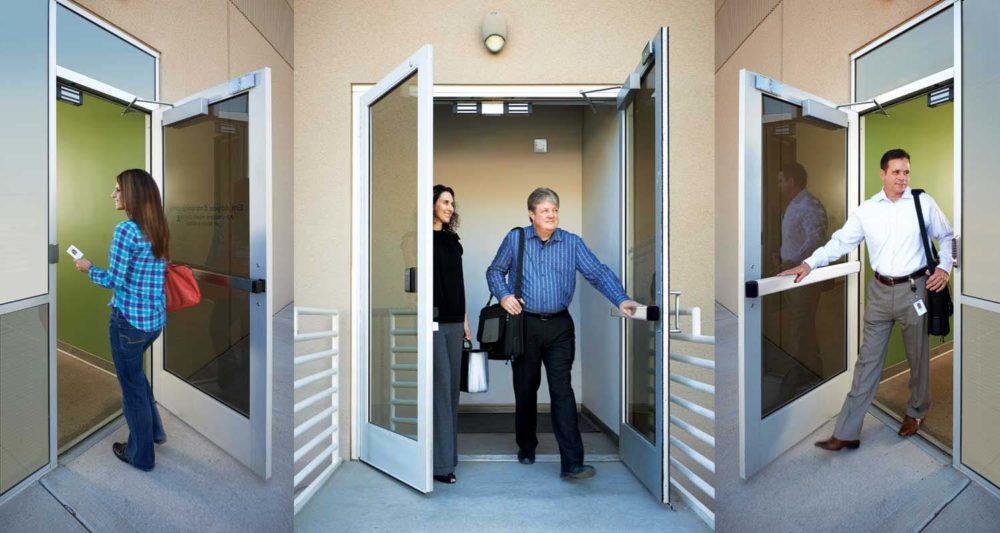
Don Erickson, the association’s CEO, was highly receptive to the idea, and found a willing and enthusiastic audience in CSI’s technical director (and, at the time, interim executive director) Greg Ceton. With a series of conference calls, Ceton and his team outlined the process for recommending changes to MasterFormat. Given the likely scope of the effort, CSI requested recommendations be submitted into the approval process by April 2015.
An initial group of volunteers to lead portions of the effort was recruited during June and July 2014, and an orientation call was held in August 2014 between volunteers and CSI representatives. They identified 13 product and technology areas around which to organize the material for recommendation. Working groups for these areas comprised leaders that represented manufacturers and consultants alike who had particular expertise in each area. Over the next two months, they were rounded out with additional volunteers and rough initial content was developed. More than 100 industry professionals volunteered to assist. Each group labored in earnest, leading to an initial rough draft of recommendations presented to CSI in February 2015.
At that point, critical guidance was received from CSI. A few of these recommendations (such as establishing a new division for fire-related disciplines)were non-starters. Also, too many top-level categories had been identified, and we were instructed to consolidate and pare those back to allow for future expansion. We were also given suggestions for the proper format for inputting the anticipated large amount of data. Finally, CSI advised that security-related areas outside of Division 28 were fair game to be addressed.
It was decided to use a ‘change-matrix’ approach to list items to be changed, added, or deleted (and to describe the reason for the change and offer guidance notes). Frank Pisciotta, then-president
of IAPSC, supplied a workable format. A next iteration of the changes was produced in the required format and offered to CSI for comment in March 2015. Critical feedback led to the third and final iteration submitted in April. As this article shows, major changes were generated by this effort.
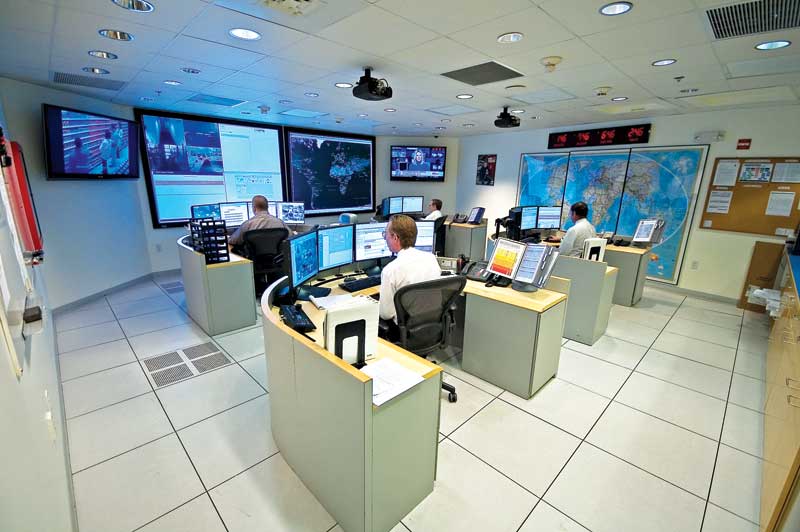
Photo courtesy Sanofi Genzyme
Common Work Results
A significant number of modifications were made in 28 05 00−Common Work Results for Electronic Safety and Security. While there is much additional detail contained under the areas described in the following paragraphs, the net effects are to fill in a number of holes, eliminate redundancies, and provide the system specifier more flexibility when dealing with various application-specific electronic safety and security systems.
27 15 01
All conductors and cables (plus conduits, backboxes, cable trays, and raceways) have been moved to Division 27−Communications. This now groups safety and security conductors with other application-specific conductors in 27 15 01−Communications Horizontal Cabling Applications.
Power Sources for Electronic Safety and Security
“Power Sources for Electronic Safety and Security” has been added as a new category. Most power sources for security are application-specific and fall within the 12 to 24 volt (AC or DC) range, with the exception of Power over Ethernet (PoE). This is different from low-voltage ranges identified elsewhere in MasterFormat, and prior categories were inadequate in describing these. Often, these power sources require specific UL approvals.
Also included under this umbrella are security-targeted PoE sources, uninterruptible power supplies (UPS), solar sources, and power-source monitoring. The monitoring of power for security and fire can be compared to a heart monitor, where low-voltage power is the life blood of an electronic system. Recent network-based monitoring of performance, alarm conditions, and battery status help provide greater resiliency of these critical voltage systems.
Servers, Workstations, and Storage for Electronic Safety and Security
The category “Servers, Workstations, and Storage for Electronic Safety and Security” contains products that are typically application-specific to electronic safety and security and often cover multiple functions. Including these in Division 28 provides the specifier the flexibility to include dedicated devices in this division, or to include them in Division 27, particularly where functionality may go beyond safety and security.
Communications Equipment for Electronic Safety and Security
The same argument applies to communications networks for safety and security, particularly IP networks. A new category, “Communications Equipment for Electronic Safety and Security,” includes network switches, routers, firewalls, media converters, and wireless transmission equipment. This, too, provides the specifier the ability to treat these areas in Division 28 where networks are application specific, or in a broader context in Division 27. There was a precedent for this rationale in Division 40−Process Interconnections under 40 66 00−Network and Communication Equipment.
Cybersecurity Requirements for Electronic Safety and Security
To this author’s knowledge, an important new category, “Cybersecurity Requirements for Electronic Safety and Security,” is the very first occurrence of cybersecurity in MasterFormat, but should be considered for inclusion in all other divisions where equipment employs network-based communications. (SecuritySpecifiers is now soliciting industry input with the particular goal of providing sample specification language to its constituents).
Systems Integration and Interconnection Requirements
“Systems Integration and Interconnection Requirements” addresses the need to specify how major subsystems—mechanical, electrical, and information—Interact to provide a functional, integrated system.
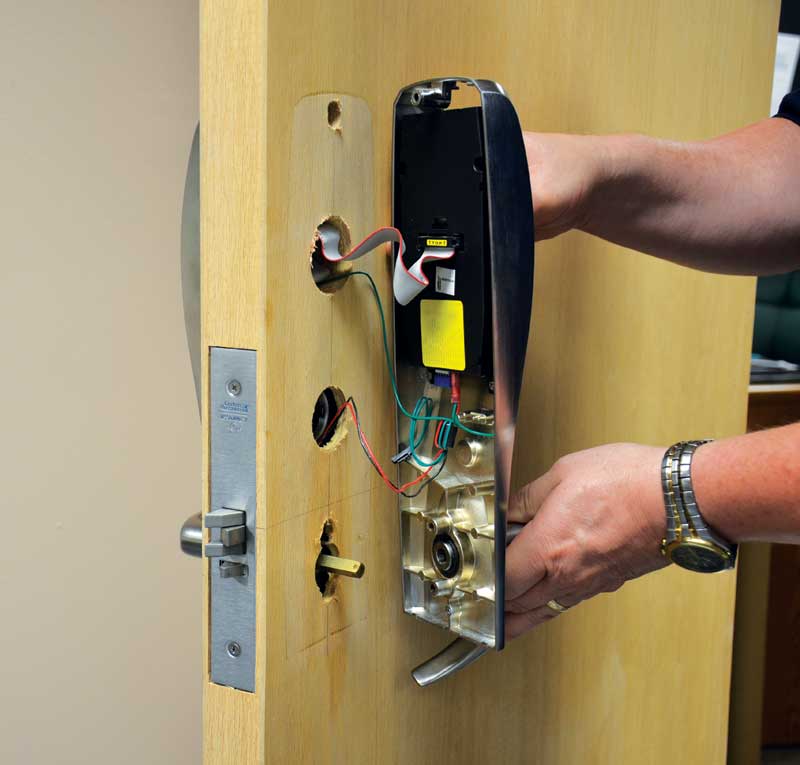
Photo courtesy Assa Abloy
Access control
The original Division 28 category breakdown did not well-represent the major product categories for electronic safety and security—this problem had only been compounded by advances in technology since 2004, which is the date of the last major revision.
For security, it is important to note the generally accepted three major product ‘pillars’ of the industry—access control, video surveillance, and intrusion detection. Further, electronic safety encompasses a variety of categories, headlined by fire detection and alarm products. The team’s initial draft featured eight top-level categories, but feedback from CSI indicated this was too many, due to the need to leave room for future expansion. This prompted a critical and thoughtful process to define a limited, but useful, set of five Level 1.5 categories—four in security and one titled “Life Safety.”
To start, “Access Control” was unbundled from “Intrusion” to exist as a standalone category. From there, several significant changes were made.
General Requirements for Access Control Systems
A section was added for “General Requirements for Access Control Systems.”
Access Control Software and Database Management
Under “Access Control Software and Database Management,” expanded subsections were included for Access Control Software (further divided into areas such as operating systems and mobile applications) and Access Control Software Interfaces.
Access Control System Hardware
“Access Control System Hardware” was expanded to provide a more granular breakdown of hardware types, such as network controllers, door controllers, and input/output (I/O) devices.
Access Control Hardware Devices
“Access Control Hardware Devices” was moved over from Division 08 and encompasses those electronic devices that are key components of an access control system, including electrified locking devices and biometrics. Other key additions include:
- “Egress Management Devices;”
- “Telephone Entry Systems;”
- “Intercom Entry Systems;”
- “Electronic Key Management Systems;” and
- “Visitor Management.”
Many of these changes were implemented to address the Division 08/Division 28 dilemma of providing electronic access control devices found in different divisions, compounded by the increasing intelligence at the door. The new structure clearly puts electronic and intelligent devices in Division 28.
Benjamin Williams, CSI, a senior product manager for a major door hardware manufacturer addressed this dilemma.
“Coordination is the key to successful project management. Most of the coordination issues we see on projects today are a result of trying to use traditional 08 71 00 and 08 74 00 specification sections for deliverables that cross over in to multiple sections such as 28 13 00 and 08 71 00,” he explained. “Similar to how automatic operators have been historically specified, utilizing a Section 08 06 71 for door hardware schedule coordination in lieu of traditional specification practices allows the specifier and installer the ability to collaborate on the responsibilities of each party during the installation process in one area of the specification.”
Williams explained the Section 08 06 71 schedule may be incorporated into Part 3 (Execution) of the 08 71 00 door hardware specification. In doing so, a column in the 08 06 71 Schedule may then be used to call out a specific section of the specification responsible for each component of the opening.
“In order to utilize this format, garnering the support of the architect is critical in order to provide a better coordinated specification. As a result, we have focused on the project delivery method and who will be managing the end-of-line terminations and commissioning of the opening. In almost all cases, that is the 28 13 00 contractor. This is without consideration to the timing for the issuance of the bid packages,” Williams says. “For example, 08 71 00 may be bid at an earlier date than Division 28 items, which typically come out with the electrical package.”
Video surveillance
“Video Surveillance” was formerly included as 28 26 00−Electronic Personal Protection Systems, but is now broken out as its own category. Some changes were obvious, such as including, naming, and classifying camera types under a sub-category called “Surveillance Cameras,” instead of “Remote Devices and Sensors.”
In addition to classifying the major types of surveillance cameras, a provision was made for accessories and illuminators. Video analytics was added under “Video Management Systems,” and recording devices are moved under “Storage Appliances in Common Work Results.”
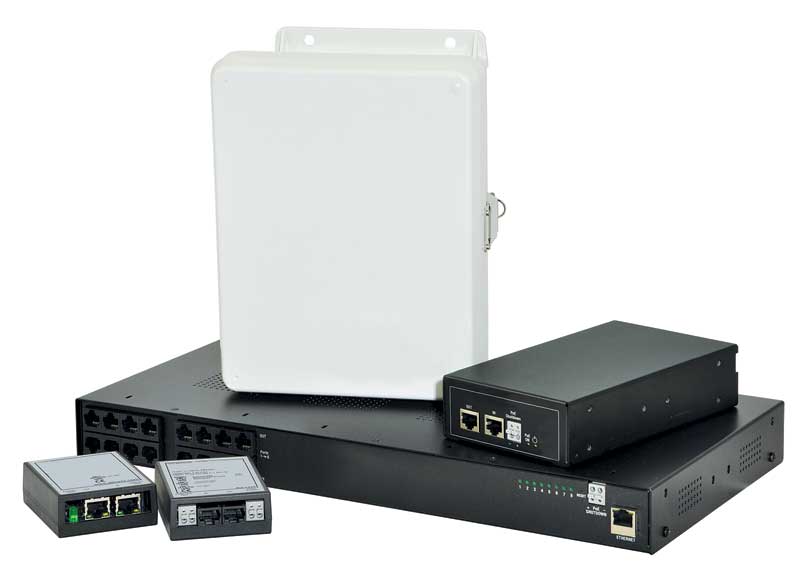
Photo courtesy Altronix Corporation
Security detection, alarm, and monitoring
This area is where a significant consolidation of products occurs, built around intrusion and intrusion response. “Intrusion Detection” is the first major subcategory, segmented into building intrusion detection, area and perimeter intrusion detection, and intrusion detection interfaces. The second subcategory is “Security Monitoring and Control,” which preserves “Electronic Structural Monitoring Systems” and, importantly, adds:
- “Security Operations and Monitoring Center;”
- “Security Monitoring and Control Software;”
- “Security Monitoring and Control Services;”
- “Tracking Systems” (for assets and personnel); and
- “Audio Monitoring.”
Life safety
“Life Safety” incorporates the major classifications from the former “Electronic Detection and Alarm” category, and now encompasses “Environmental Sensors,” “Fire Detection and Alarm,” “Electronic Personal Protection,” and “Mass Notification.” It adds the new category of “Emergency Response Systems,” including “Computer-aided Dispatch.”
“Fire Detection and Alarm” has been subdivided into “Detection and Initiation,” “Fire Alarm,” and “Emergency Control Function Interfaces.” An important contribution of the working group (led by Ted Milburn of a power management/controls provider, Eaton Corporation), there was a move to more closely align categories and terminology with that issued by the National Fire Protection Association (NFPA), whose guidance is critical to fire system designers.
Specialized systems
This last top-level category provides for disparate items with their own unique characteristics.
Information Management and Presentation
The first category added, “Information Management and Presentation,” is a major one in today’s electronic security and life safety systems. A number of systems, called by various names, such as physical security information management (PSIM), command and control, and situational awareness, are used to aggregate and correlate information from diverse internal and external sources to provide a unified ‘state of affairs’ picture. Often, these prompt operators into action or automatically generate a response, such as keying a mass notification system.
The “Data and Information Management” section of the category is built around an extensive list of system interfaces. The other major sections are “Data Presentation” and “Control Room and Monitoring Equipment.”
Detention Security Systems
The second category, “Detention Security Systems,” eliminates most of the detention-related items in the former category of “Electronic Monitoring and Control,” focusing on interfaces to connected subsystems. It adds non-surveillance video sections for interrogation, arraignment, and visitation.
Other changes
Recommendations were made to add precast-concrete security bollards under Section 03 48 13 and manufactured metal security bollards under 32 39 13. Additional maintenance was performed in detention related items in Divisions 08 and 11.
Given the extent of the formal recommendations concerning the areas just discussed, inputs were provided in the change-matrix spreadsheet format. One of the challenges in assembling this tool was following the guidance provided by CSI to avoid assigning any suggested classification numbers.
This task is performed by CSI following acceptance of recommendations. Therefore, each item added, modified, or deleted was provided a Reference Number. If the item was new, the new levels and numbers were reflected to the extent possible—for example, 28 TBA TBA (i.e. To Be Assigned). Old level numbers (changed or deleted items) were specified. Items were marked as (1) No Change, (2) Add, (3) Modify, or (4) Delete. A description of the change, reason for change, and recommended Guidance Notes were provided. Further, a cross-reference to MasterFormat 2014 correlated each item in the old Division 28 with our corresponding Reference Number in the new breakdown.
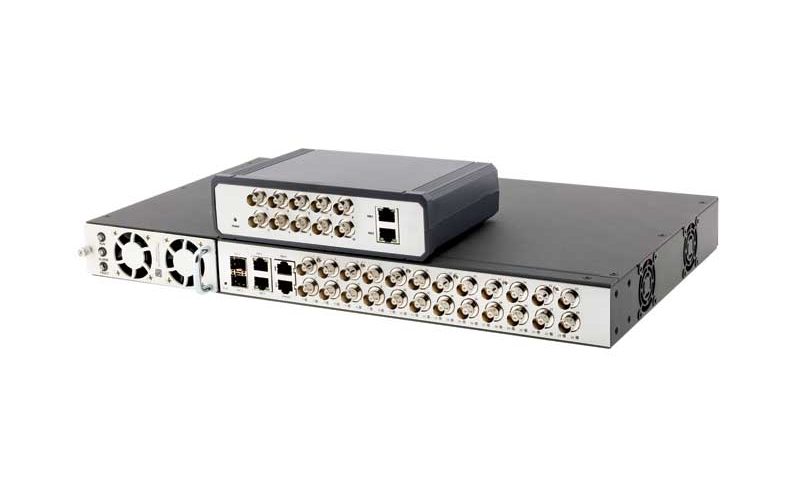
Photo courtesy Phybridge Inc.
CSI evaluators were able to quickly understand the proposed change and how it fit into the overall framework. This change matrix, the third iteration of the recommendation summary, was submitted in April 2015.
Explanatory briefings were held in two conference calls during the summer months with CSI’s MasterFormat Task Team to explain the submitted recommendations and the rationale behind them, as well as the change matrix’s format. There was a general awareness and recognition Division 28 was due for a major overhaul, and the presentation to the task team was well-received.
It was deemed important the Security Industry Association had agreed to make this effort a standing ad-hoc committee to accommodate future changes on a timely basis, serving as a conduit for the industry’s proposed changes to CSI. This committee will consist of a diverse panel of industry experts, serving to represent all quarters of the industry concerned with specified projects.
The Task Force convened during the weekend of September 11 to 13 in order to review all MasterFormat change recommendations, including Division 28. We were informed on September 12 the recommendations were approved in total. At the time of this article’s writing, CSI staff is in the process of assigning numbers to the recommended items for incorporation into MasterFormat 2016. SIA and SecuritySpecifiers will undertake the task of getting the word out to the security industry to begin the process of moving new or in process specifications to the new MasterFormat 2016.
Conclusion
This author expects there will be far-ranging impacts from this effort. The first is literally at the industry level. By strengthening the ties between SIA and CSI, it is hoped construction project specifications more accurately incorporate and reflect the needs of the security or safety installation and that contracting procedures help to preserve the intent of the design.
Next, those who may have rejected MasterFormat in their designs because the Electronic Safety and Security categories had become less usable, should revisit—the makeover has been substantial. For all those writing safety and security specifications, a workable format now exists through which the design intent and specifics can be accurately communicated.
For those contemplating their own recommendations in any MasterFormat division, this author has several thoughts. First, one should engage CSI personnel early and keep them involved on an ongoing basis. The initial guidance from CSI staff and volunteers helped the effort get off to a good start and in the right direction. Their periodic feedback prevented our group from getting too far off track. Continuous exposure and engagement created an understanding and an expectation of the final result.
The submission of recommendations was done several months earlier than what would normally be expected in order to give the CSI team the time to digest it all. Simply throwing a set of recommendations over the wall at the deadline would have made the approval task force’s job much more difficult, leading to unwanted changes and possible schedule slippage, perhaps to the next issuance of MasterFormat in 2018. As in any successful project, effective and continuous communication is paramount, and it is crucial to have knowledgeable and committed parties willing to put the effort into effective collaboration.
Ray Coulombe, CSI, CDT, is founder and managing director of SecuritySpecifiers. He has more than 30 years of experience in the electronic security industry, and has founded (or been a significant contributor to) eight startup and early-stage companies. In addition to degrees in electrical engineering, management, and information technology Coulombe holds numerous industry certifications. He is a Life member of Institute of Electrical and Electronics Engineers (IEEE), and is also part of CSI, Tau Beta Pi, and (ASIS). Coulombe is a veteran (captain) of the U.S. Air Force, where he participated in the development of advanced missile systems. He can be reached via e-mail at ray@securityspecifiers.com[1].
- ray@securityspecifiers.com: mailto:ray@securityspecifiers.com
Source URL: https://www.constructionspecifier.com/remaking-division-28-specifying-electronic-safety-and-security-with-masterformat-2016/